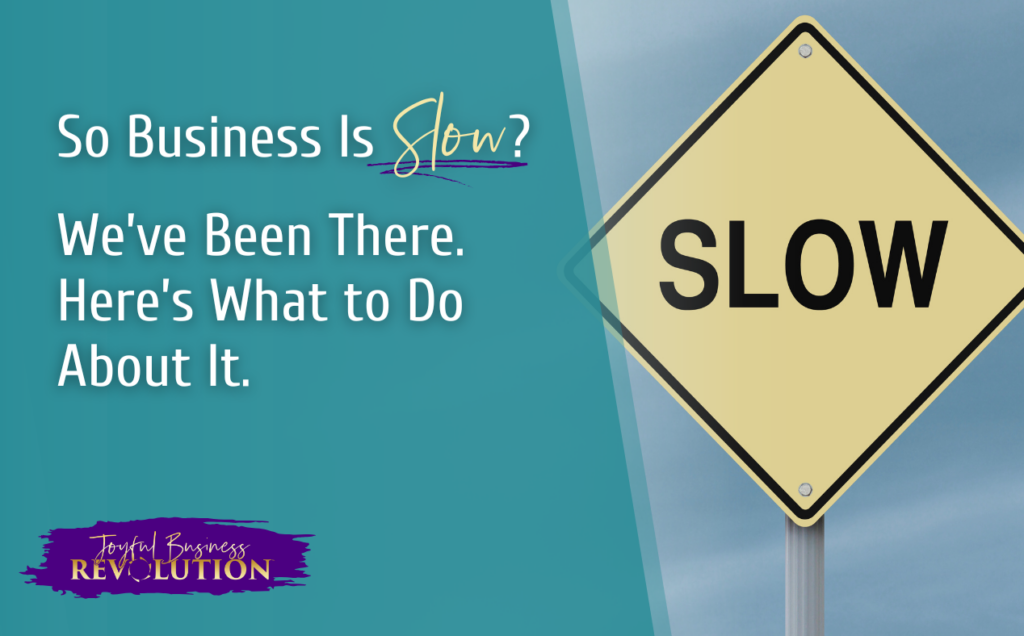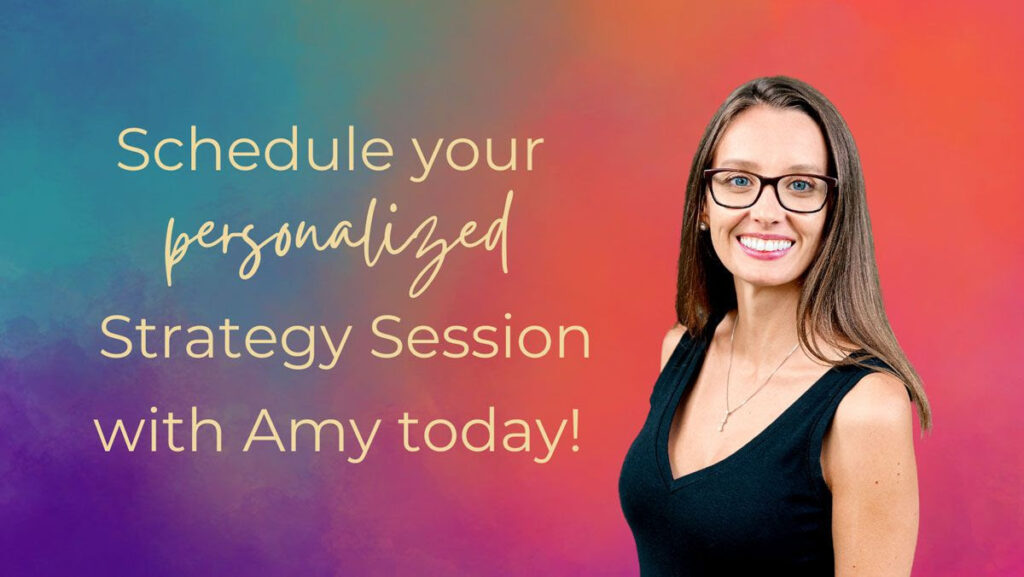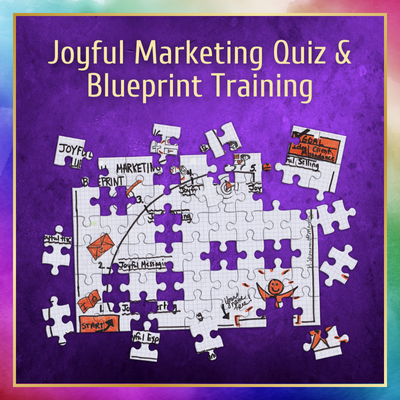I’ve been hearing from a lot of people lately—on calls, in messages, and across social posts—that business is slow this year.
Some people I’ve talked to have begun to question if they should look for something new, add a new service, or even shift gears and start looking for a job. Meanwhile, they’re worried that whatever new skills they learn might be taken over by AI soon.
If a complete 180 is the right path for you, I’m not going to try to convince you otherwise.
You deserve a life of joy—and if doing something else will bring that to you, I’m in your corner the whole way.
But if you’re making those decisions out of fear—if you want to be in business, but feel like something’s not working—then let’s talk honestly about what’s going on.
Because this isn’t the first time business has felt slow for some people. And it won’t be the last.
We’ve seen cycles like this before when something happens that makes people hold their budgets a bit tighter. The key to weathering it lies in paying attention to what’s really happening.
So if you’ve been stressed because business feels slow, this is your sign to take a breath, look at what’s really going on, and make smart, grounded decisions.
Let’s look at how to know if what you’re experiencing is a real slowdown (and not just a story you’re telling yourself)… and what to do next if it is.
Is It Actually a Slowdown… or Just a Story You’re Telling Yourself?
First, I want to start with the part that trips most people up—revenue is a result, not a root cause.
When someone says, “Business is slow,” what they usually mean is, “Revenue is down.” But before you assume the sky is falling, it’s worth digging into what’s really behind that drop.
Business doesn’t just slow down out of nowhere.
When we work with coaches, consultants, and other service-based businesses, we always look at what’s really going on.
So I’d encourage you to do two things:
- Review your actions from the last 30, 60, and 90 days that led you here. Did you slow down your marketing? Change your message or how often you show up?
- Look carefully at what is really going on in your business to get clues into if and why business is slowing down. Pay attention to metrics like:
- # of sales calls — are you booking the same number of people?
- Your conversion rate — and directly related, the quality of your leads.
- Click-through rates and engagement trends. Are they up? Down? Holding steady?
- Time to close a sale — are buyers taking longer to say yes than they were three months ago? Or is it about the same (or even faster)?
These numbers tell a much clearer story than “I think things are slow.”
And sometimes, those numbers reveal that you haven’t been showing up consistently—because life happened, or you took a break, or your message just isn’t landing the same as before.
That’s not something to shame yourself over. But it is something you can respond to—with a smarter plan.
Because if you stepped back your efforts in the last few months, it makes sense you’re feeling the impact now.
It’s not necessarily a problem. It is, however, a data point.
The story you tell yourself matters.
If you keep repeating “business is slow” while doing the exact same things and assuming nothing will change, you’ll likely prove yourself right.
But if you shift the story based on data, you can create a different self-fulfilling prophecy — one that leads to success.
Instead of saying, “No one is buying right now,” if the problem is that you’re not booking sales calls, you might say:
“Of course no one is buying right now — I haven’t booked sales calls or sent out proposals. Here are X things I”m going to do to get more people on the phone.”
That simple shift allows you to take intentional action instead of reacting to a gut feeling.
Not sure where your slowdown is really coming from?
This is exactly what Amy does in her strategy calls—she helps you step back, spot the patterns, and figure out your next best move. 👉 Book a call with Amy now
Is It Everyone… or Just Me?
If you’ve been asking yourself this question lately, you’re not alone.
Business slowdowns can happen for all kinds of reasons—but they don’t always mean your business is broken. Sometimes it’s macro-level shifts. It could mean something is changing in your industry. Then again, it might be something inside your business that’s just ready for a tune-up.
Macro-Level: Big Picture Shifts (and the Beliefs Behind Them)
Sometimes slowdowns come from real, external factors. Other times, they’re rooted in what you believe is happening.
Let’s start with a common one: “Summer is always slow.”
We hear this all the time from service-based business owners—especially those with kids, or whose clients follow the school-year rhythm.
And if that’s your world? Slower months might be real—and even intentional.
I want to be very clear — summer slowdowns don’t happen for everyone.
We don’t see them in our business. And neither have many of the coaches and consultants we support.
We don’t disappear in the summer, so things don’t slow down.
If we notice a dip, we don’t panic and suddenly launch something out of fear.
We don’t slow down marketing in slow times. We don’t speed it up either.
We stick to a consistent marketing rhythm—and that keeps leads warm, even when things are “slow” elsewhere.
A consistent plan = consistent results.
If summer feels slow, ask:
- Is it actually slower than usual… or are you assuming people aren’t buying?
- Did your presence shrink? Your messaging shift?
- Or did you plan for time away but forgot to support your business while you’re gone?
AI fatigue is another factor.
But it’s not because AI is taking your business away, per se.
If everyone is using the same prompts, churning out the same robotic copy, and flooding the feed with flat, lifeless content… of course business is going to slow down. You’ve lost your differentiation.
The last thing you want to do is underwhelm potential clients with content that doesn’t feel real or looks like 100 other posts they’ve seen this week alone.
If your business was built on relationships and your content suddenly sounds like everyone else’s… that might be your slow down talking.
This isn’t an anti-AI rant. We use it strategically in our business too. But I want to remind you — AI isn’t you. It doesn’t replace connection. Most importantly of all, it can’t tell your story for you.
Industry-Level: When the Rules Start to Shift
Sometimes the slowdown isn’t about you—it’s about what’s happening around you in your industry.
Maybe a competitor launched a new offer that’s suddenly getting attention.
Maybe your audience is experimenting with cheaper, faster, AI-powered tools—even if the results aren’t comparable.
Or maybe people just aren’t searching for your kind of support in the same way they were 6 months ago.
This happens. Industries evolve. Offers that were once cutting-edge become expected. And new solutions pop up that change the way your clients evaluate value.
The trick is recognizing that early—before you start doubting your entire business model.
If things feel slower, ask:
- Are your best-fit clients still investing in support like yours? If not, what are they prioritizing?
- Has something shifted in how people find or evaluate your work?
- Have people’s expectations shifted about how you deliver or solve their problems?
- Do you need to review your offer suite and create a new tier of access?
And most importantly, has your message evolved with “the times”?
If you’re still speaking to the same pain points, using the same examples, or marketing in the same places you were a year ago—your audience might have moved on without you.
That might mean your offer needs a fresh message or a smarter entry point.
Want help figuring out where to focus?
👉 That’s exactly what we focus on inside Marketing for the Rest of Us—building trust-rich, human-centered messaging that adapts with your people. If your content isn’t hitting like it used to, it might be time to rework what you’re saying and how you’re saying it.

Business-Level: When the Slowdown Is Coming from Inside the House
This one’s the hardest to face—because it puts the mirror up. On the flip side, it’s also the one you have the most control over.
Sometimes, your business slows down… because you slowed down. Whether intentionally or not.
Maybe you took a break after a big push.
Maybe you got burned out.
Maybe family needs took priority.
Been there. Done all of that.
On the other hand, maybe it wasn’t about life getting in the way.
Maybe you were in build mode—creating a new offer, onboarding new clients, fixing back-end systems—and didn’t have capacity to market.
None of that means you’ve failed. But it does mean your business probably needs some attention now.
If you’re noticing a dip, ask:
- Did I stop showing up the way I used to?
- Have I shifted focus away from lead generation and into delivery—or distraction?
- Am I relying too heavily on one source of leads (referrals, a single platform, a paid ad that’s stopped working)?
- Have I been waiting for motivation instead of working a consistent plan?
If you’ve been caught in a season of “I’ll get to it when things calm down,” it’s time to course-correct.
A lot of people come to me when business is slow due to their own actions and wonder if they should burn it all down.
That’s not advice I’d ever give because most of the time, all that’s needed is a clear, consistent plan to reconnect with your audience and remind them why you are the one to trust.
Good news: most of the time, it can be quite simple.
What to Do When Your Business is Slow—Your Step-by-Step Guide
Once you’ve diagnosed the problem and know if it’s a macro issue, an industry shift, or something inside your business, you might be wondering what’s next.
Whether your slowdown is seasonal, systemic, or based on your circumstances—there’s a path forward. But first, let’s get one thing straight:
The sky is not falling.
Even if your leads have dried up, your ads are underperforming, and your usual marketing magic feels like it’s lost its spark, you still have options.
Step 1. Start Where You Are—And Take Action
If you’ve stopped marketing, start again with what’s worked before. Now is the time to reconnect with your warm leads and steady channels.
If your usual tactics aren’t working, try a new experiment.
Some of our favorite low-lift ways to reignite momentum:
- Email marketing (especially if your audience has drifted off social)
- Borrowed audiences (guest teaching, co-marketing, podcast interviews)
- Live workshops or webinars with a clear CTA
- 1:1 outreach to your top 200 contacts—the people who already trust you
- Open Q&A calls or client-only pop-ups that build connection and surface needs
- Simple, direct invitations to a single next step
Because the missing piece might not be your offer—it might be the experience you’re not curating.
And if you’re skeptical this works?
Here’s proof: we’ve helped clients pull in $25K in less than 3 weeks just by reconnecting with their warmest leads using our Email Marketing Makeover Intensive.
Step 2. Rework Your Messaging (Before You Burn It Down)
If your content isn’t landing like it used to, it may not be your offer—it’s probably your message.
Ask yourself:
- Am I still solving the right problem?
- Has my audience evolved, but my messaging hasn’t?
- Am I relying on old pain points that no longer resonate?
- Am I still showing up where my people actually are?
You don’t need to scrap everything. But you might need to shift how you talk about it—and how consistently you show up.
This isn’t about throwing money at ads that are getting more expensive by the month. (And no, investing in your community is not the same as sinking dollars into an underperforming funnel.)
This is about reconnecting with your people, in your voice, in a way that actually builds trust.
That’s exactly what we do inside Marketing for the Rest of Us.
🗣️ If you want to build a trust-first, human-centered strategy that evolves with your audience, this is the place to do it.
Step 3. Diversify How You Show Up
Some of the most common slowdowns we see are tied to over-reliance on one lead source.
- Maybe referrals are down. That doesn’t mean you’ve failed—it means your source shifted. Referrals should be just one piece of your marketing puzzle, not the whole strategy because it falls out of your control
- Maybe your best collaborator pivoted or stepped back. That’s a loss—but it’s also an invitation to try something new.
- Maybe your SEO stopped working like it used to. That happened to us, too. So instead of trying to out-algorithm the algorithm, we went back to what we do best—teaching inside communities we have deep relationships with.
So instead of hustling harder, work to build a plan that plays to your strengths and gets you back in the room with the right people.
Step 4. Regulate Your Energy—So You Can Keep Going
The hardest part about a slowdown is how it messes with your head.
If you start wondering if something’s wrong with you, if your work matters, or if this whole business thing was a mistake, it’s time to step back.
Take a breath. Take care of yourself. And don’t make big decisions in the middle of a fear spiral.
Above all, please remember: your value isn’t tied to your business performance.
Sometimes, the thing that moves your business forward is being honest and vulnerable.
A while back, one of our clients wrote a great email about her experience recovering from a stroke.
She wasn’t sure if she should send it, but it was a beautiful story from the heart, and I encouraged her to share it.
And guess what? She signed two clients that week—both of whom had also experienced strokes and finally felt seen.
Connection is what people want. And when your story creates it, everything changes.
Step 5. Invest in Community (Not Ads)
If you’re craving connection, don’t just throw money at ads and hope the right people show up. We’ve grown this business without buying a single ad.
Invest in community. Show up where your people are. Host a Q&A call. Teach a workshop.
And while your goal may be to get more business, your pitch shouldn’t always be front and center.
Instead, I’d advocate for building connections and listening… which will naturally lead to reminding people what you bring to the table.
Every time I do this, I walk away with new insights, a few solid leads, and sometimes new clients on the spot.
Because when people see how you think, they start to trust how you work.
Step 6. Adapt Your Offer (Don’t Abandon It)
When an offer stops selling, it doesn’t always mean it’s broken.
Sometimes it needs a new shape, a shorter timeline, or a better entry point.
Like our client with a 12-month functional health program—in a world where AI can generate meal plans and supplement lists, her audience didn’t need more information. They needed accountability, real-time support, and expertise grounded in lab work.
We helped her reposition the offer into a 3-month intensive, made it more accessible (from $12K to $3500), and built a content library to support what she taught in session.
Now, she’s enrolling more people and making the impact she wanted without abandoning her work.
Step 7. Get Help—From the Right People
You don’t have to do this alone. But please, be picky about who you let in.
Anyone can sell a course or call themselves a coach. That doesn’t mean they’ve weathered a recession… or adapted to AI… or helped real businesses push through a slowdown without panic or gimmicks.
Before you hire a strategist or coach, ask better questions—especially about what they’ve done when things weren’t going well.
Have they:
- Navigated an economic downturn with clients?
- Adjusted messaging or offers in response to a changing market?
- Run their business through a period where nothing was working—and came out stronger?
If they haven’t walked through a slowdown themselves, they might not be the best person to guide you through yours.
We put together the 10 questions we wish more people asked before hiring a coach or consultant—so you can find someone who’s built for the long game.
And, while you’re reading that list, be sure to subscribe to our LinkedIn newsletter, Inbox Income, to get all of the updates!
Business Slows Down Sometimes—But it Doesn’t Have to End
If business is slow, it doesn’t mean something is broken—or that you are. It means it’s time to pause, assess, and make aligned decisions rooted in data, not fear.
Whether your next step is a small reconnection campaign or a full messaging refresh, there are people ready and waiting for the version of you who shows up with clarity, consistency, and confidence.



